Planting garlic can do more than give you delicious cloves for cooking; it can improve your garden’s health, ward off pests, and even help neighboring plants grow stronger. But like any gardening superhero, garlic has its allies, and its rivals.
Knowing which plants thrive alongside garlic, and which ones don’t, can mean the difference between a flourishing garden and a frustrated grower.
Why Companion Planting Works
Before diving into the “who’s who” of garlic companions, let’s talk about why companion planting is worth your time. Companion planting is the practice of strategically pairing crops so that they benefit each other. With garlic, this can include:
- Pest Control
Garlic’s strong aroma is a natural insect repellent. Planting it near susceptible crops can deter aphids, beetles, and even rabbits. This reduces the need for chemical pesticides, making your garden more eco-friendly. - Soil Improvement
Garlic doesn’t fix nitrogen like legumes, but it does have allelopathic properties. This means it can suppress certain weeds and soil pathogens, improving overall soil health for neighboring crops. - Optimal Spacing and Growth
Some plants grow tall while others spread low. Garlic’s growth habits complement many plants, ensuring that sunlight, nutrients, and water are shared efficiently without overcrowding.
By combining these benefits, garlic helps create a balanced micro-ecosystem in your garden, something that every gardener dreams of.
Best Companion Plants for Garlic
Now, let’s get to the heart of the matter: which plants thrive when grown near garlic? Here’s a breakdown of garlic’s top garden buddies.
1. Tomatoes
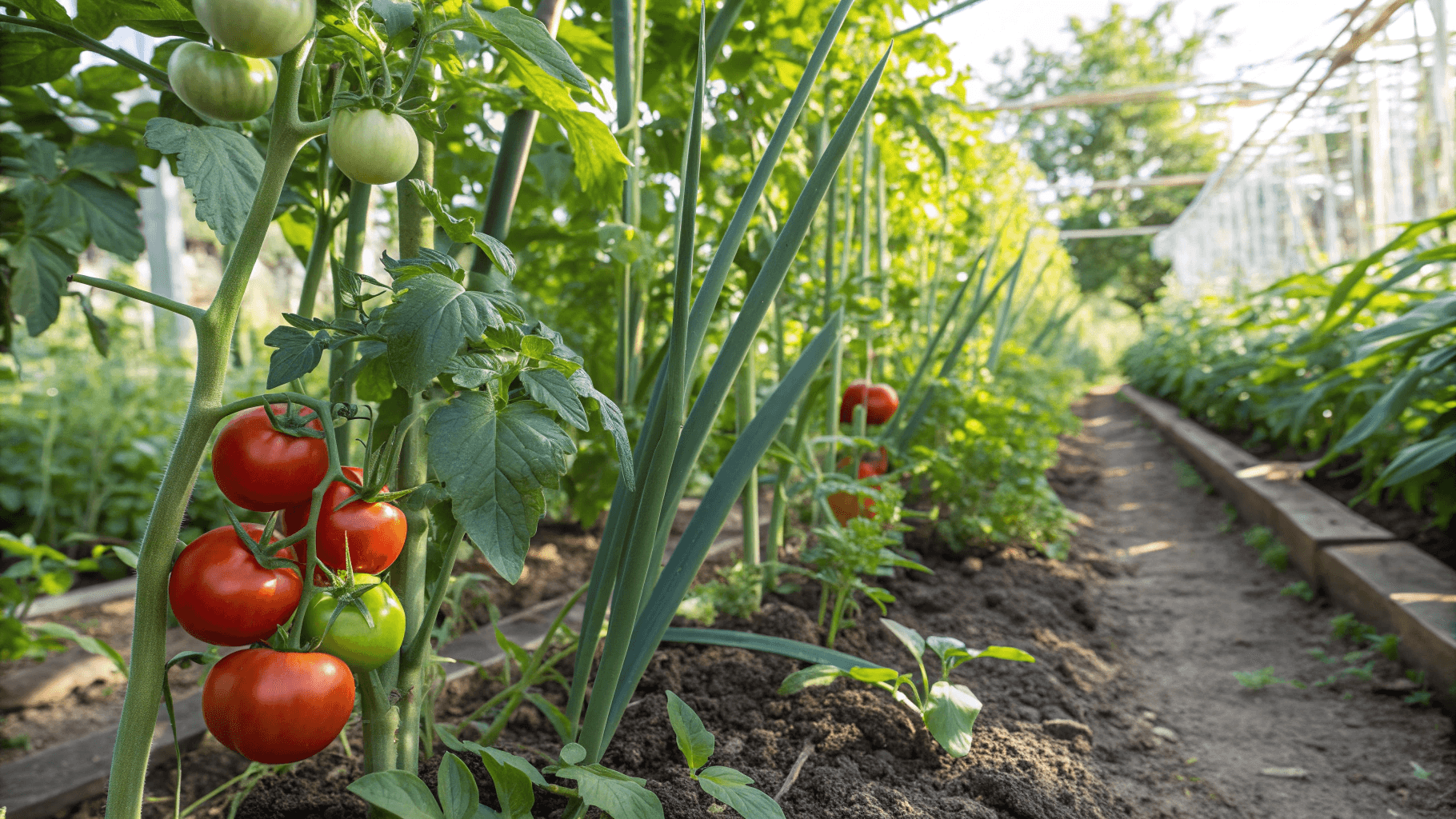
Tomatoes and garlic are a classic pairing. Garlic helps deter spider mites and aphids, which are common tomato pests. Additionally, garlic’s allelopathic properties can help reduce fungal infections on tomato plants. For best results, plant garlic around the perimeter of your tomato bed or intersperse individual cloves throughout.
2. Roses (Yes, Roses!)
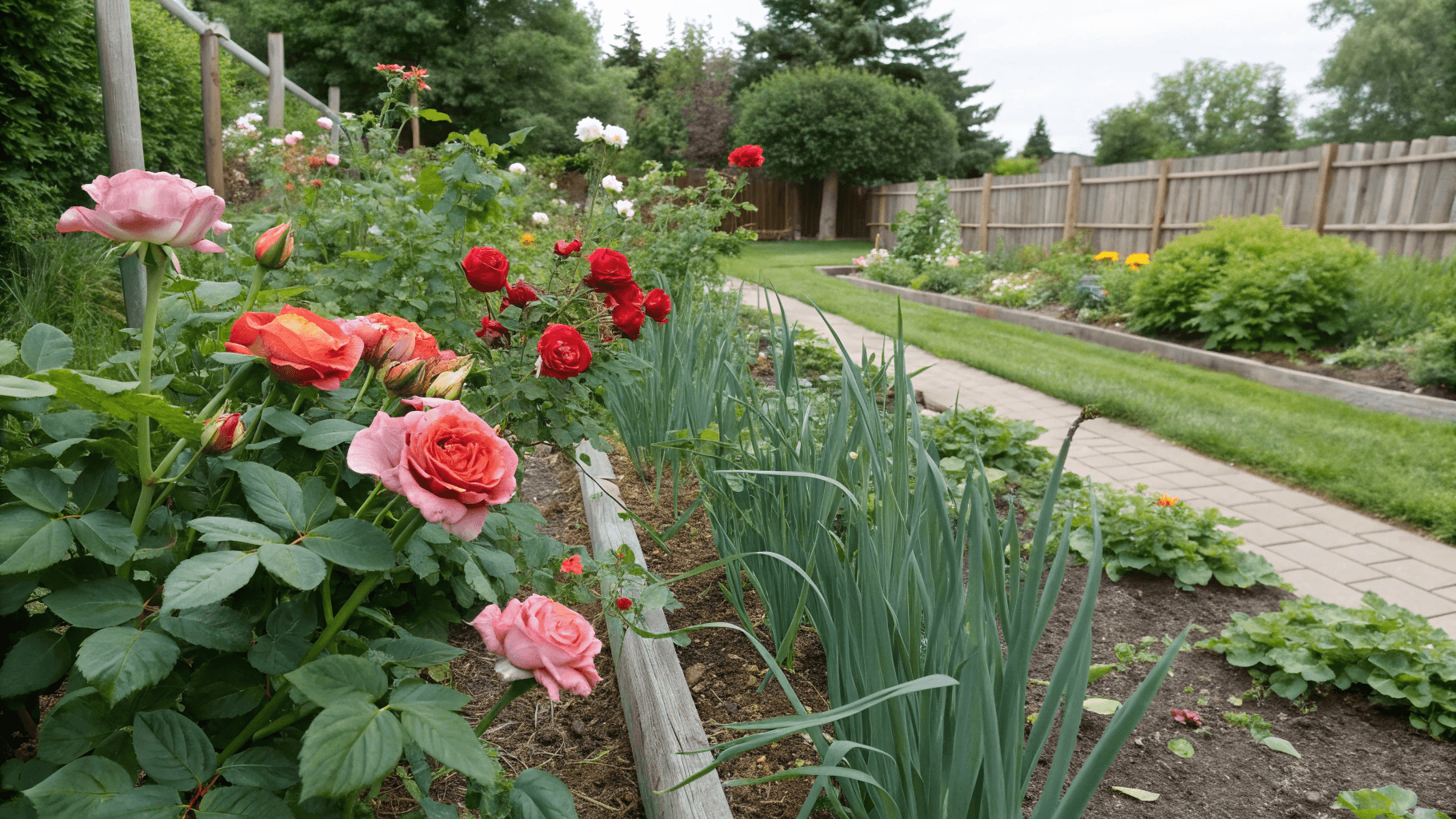
Did you know garlic is a natural aphid repellent? Planting garlic near roses keeps those pesky insects away while giving your garden a fragrant boost. Just make sure the garlic doesn’t crowd the roses, as both plants need good airflow and sunlight.
3. Peppers
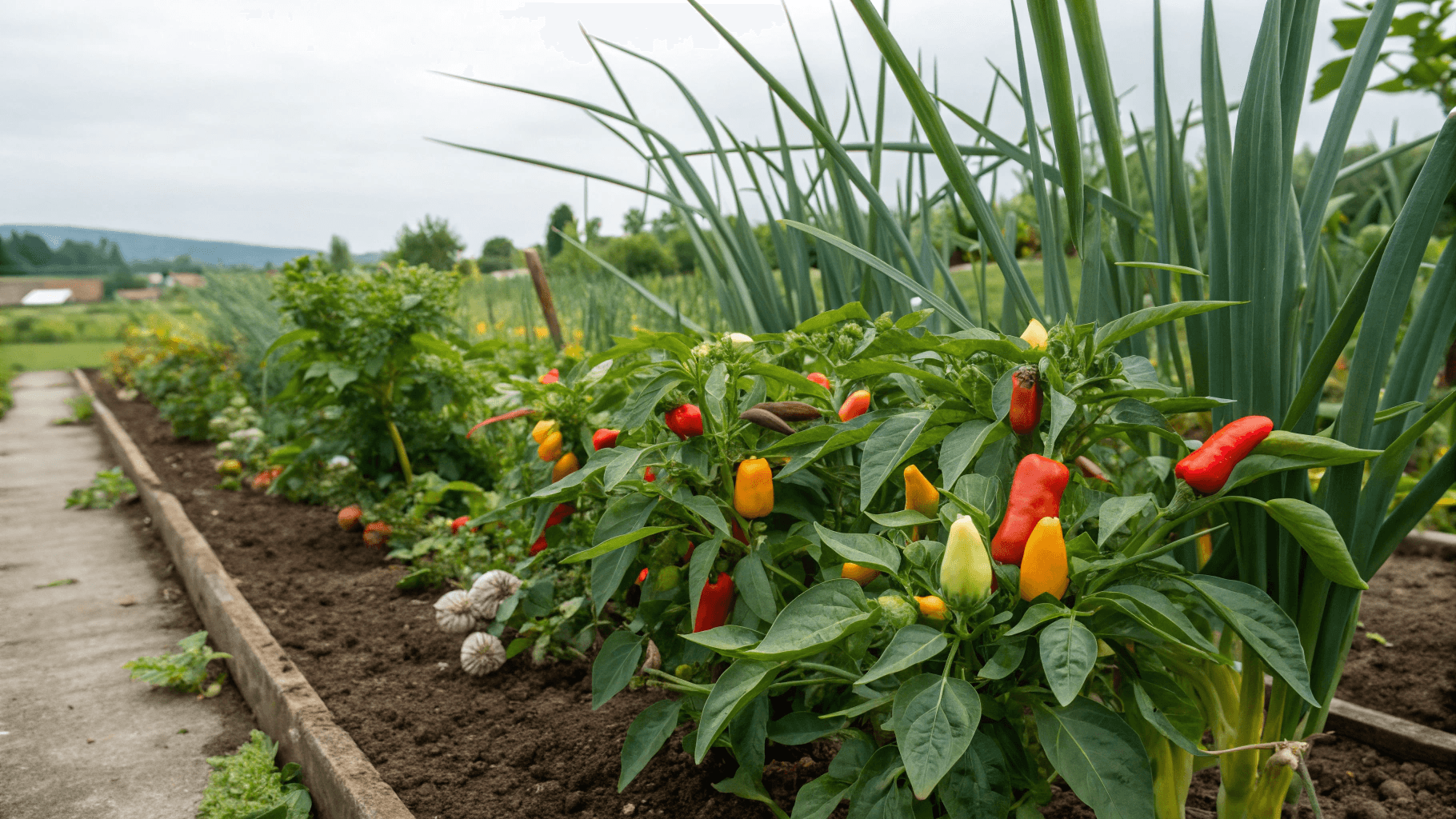
Bell peppers and hot peppers benefit from garlic’s pest-deterring properties. Aphids, spider mites, and nematodes are less likely to invade your pepper plants when garlic is nearby. Just leave a few inches between the garlic and pepper stems to avoid competition for nutrients.
4. Strawberries
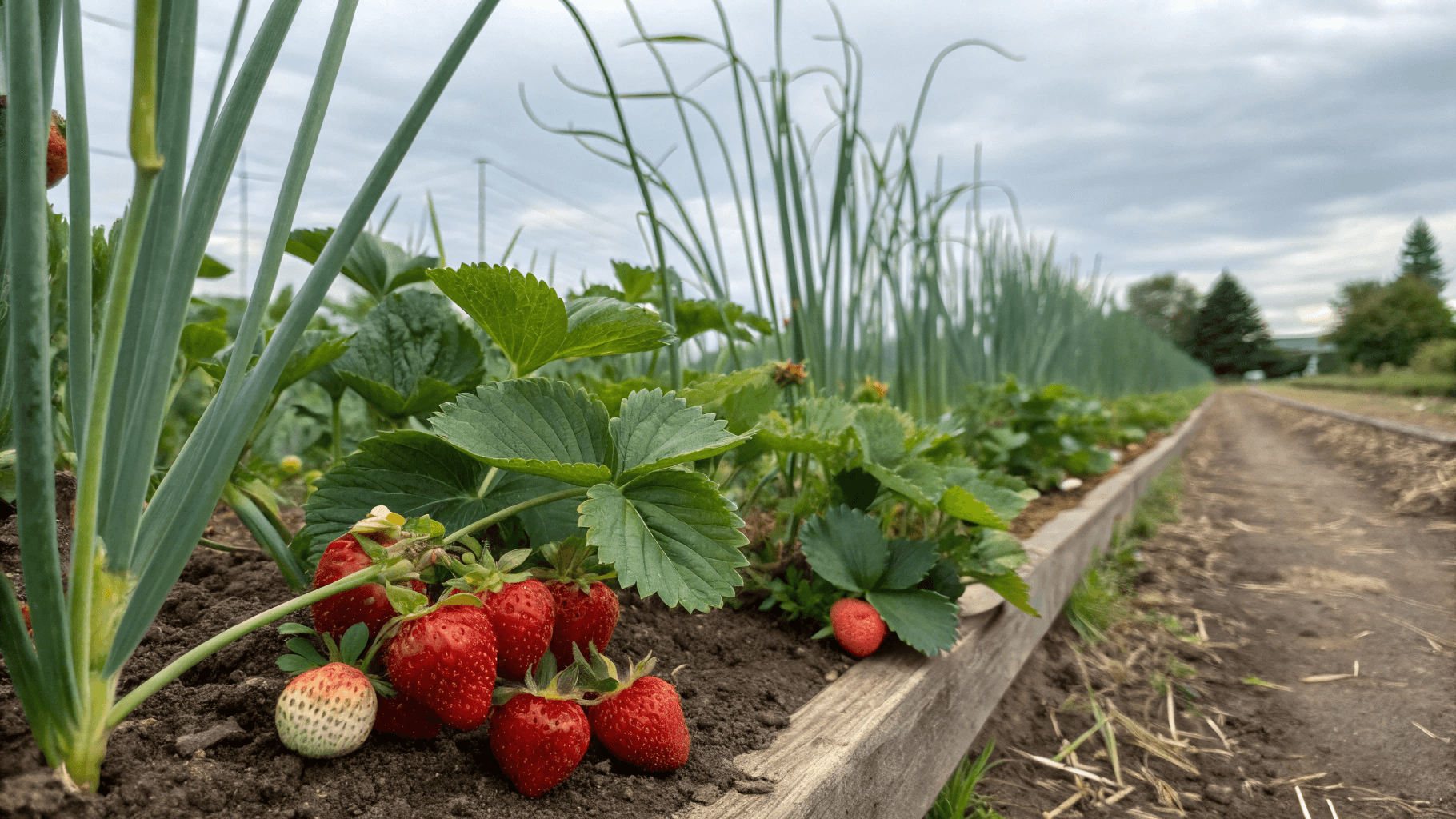
Garlic and strawberries are another winning combo. Garlic planted nearby can help ward off red spider mites and enhance strawberry flavor. Additionally, this pairing discourages fungal growth, which is common in strawberries during humid months.
5. Carrots
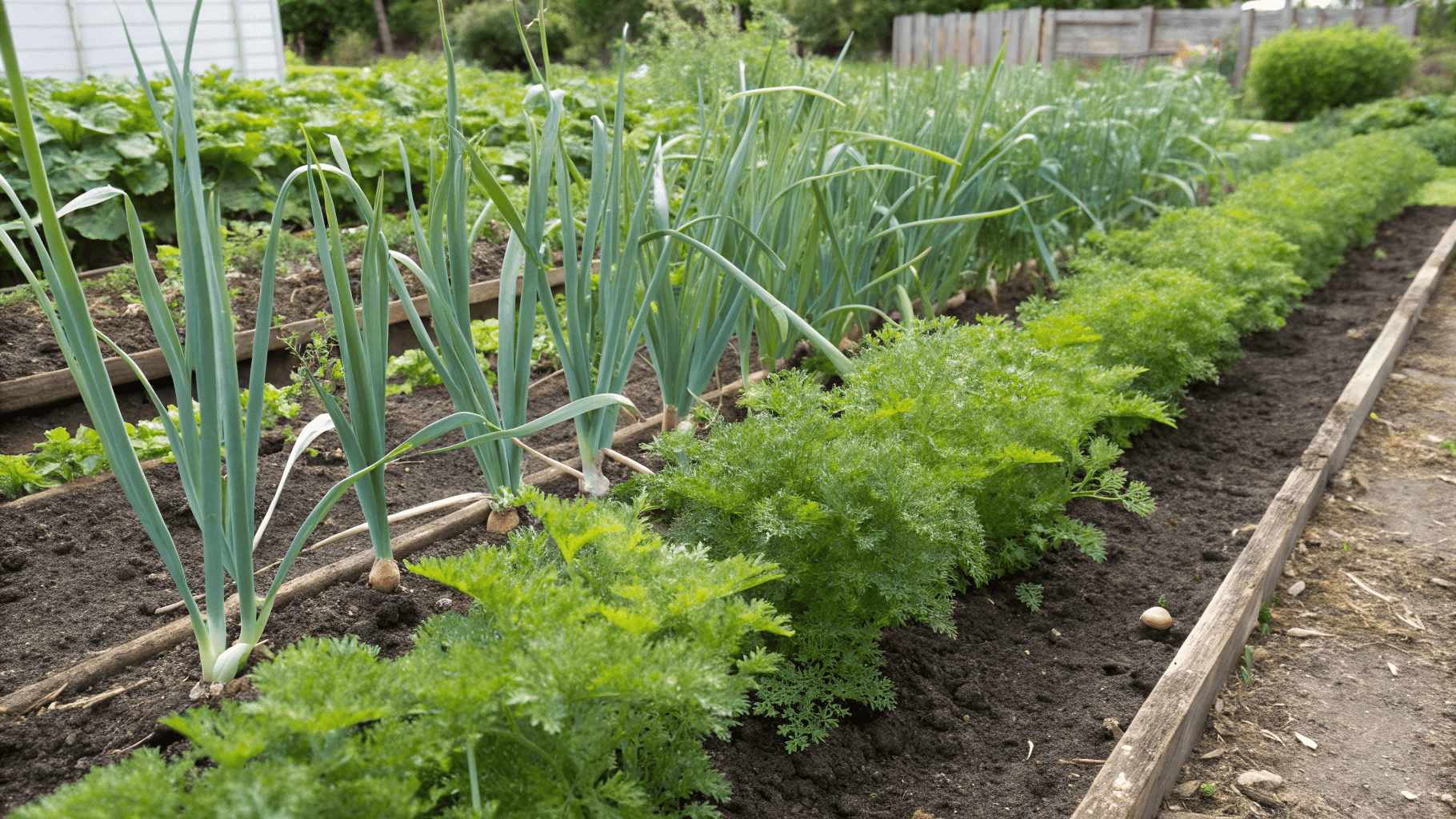
Garlic is a great friend to root vegetables like carrots. Its strong scent confuses carrot flies, keeping these pests away from your delicate roots. Plant garlic in between carrot rows to maximize its protective effects.
6. Lettuce and Greens
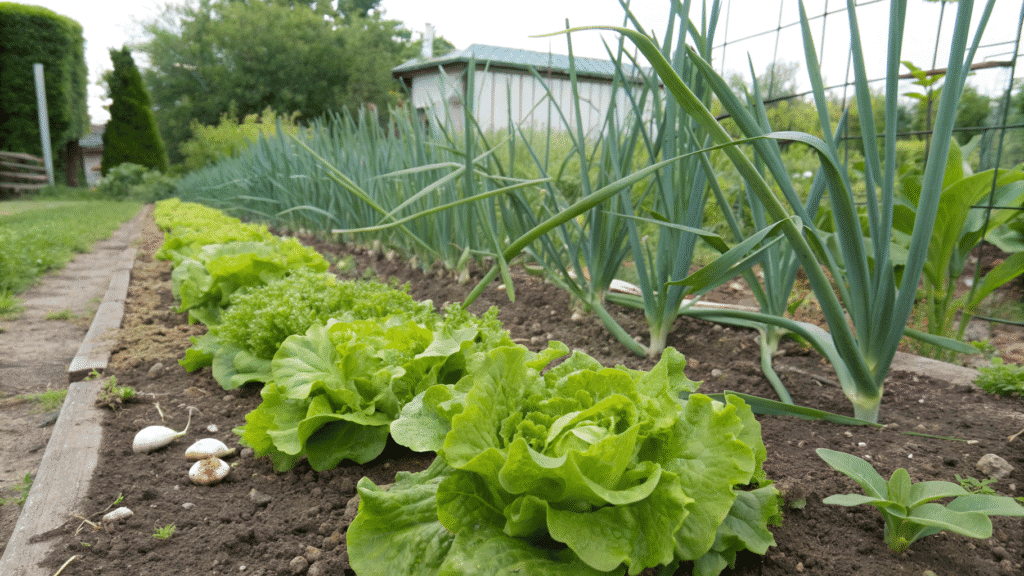
Leafy greens like lettuce, spinach, and kale thrive near garlic. Garlic repels pests that often target these tender plants, such as aphids, caterpillars and cabbage loopers. Plus, garlic’s low-growing habit won’t overshadow your greens, allowing them to photosynthesize freely.
7. Potatoes
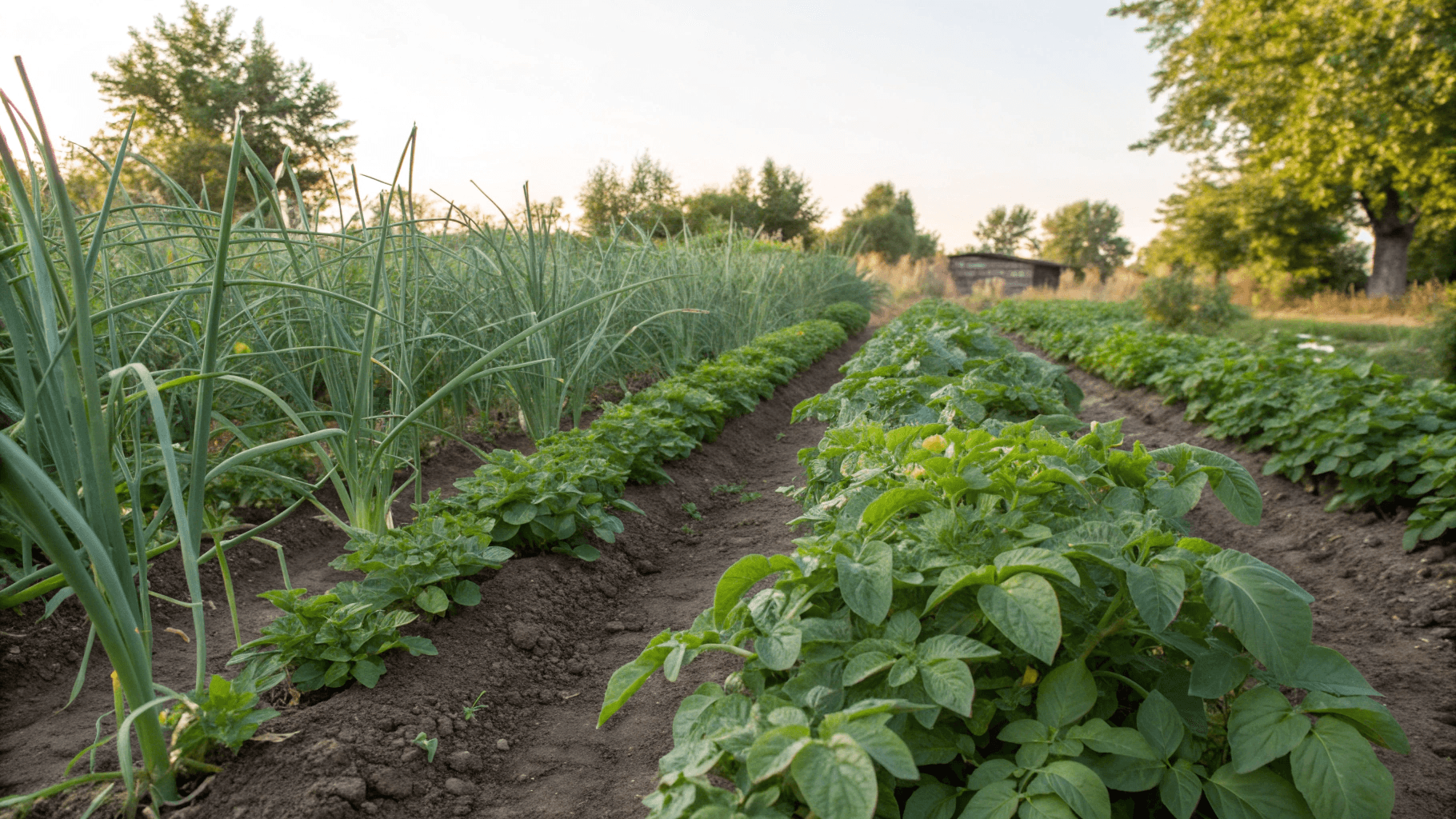
Planting garlic near potatoes can reduce infestations from potato beetles and other harmful insects. This natural protection improves tuber quality and increases overall yield.
8. Beets
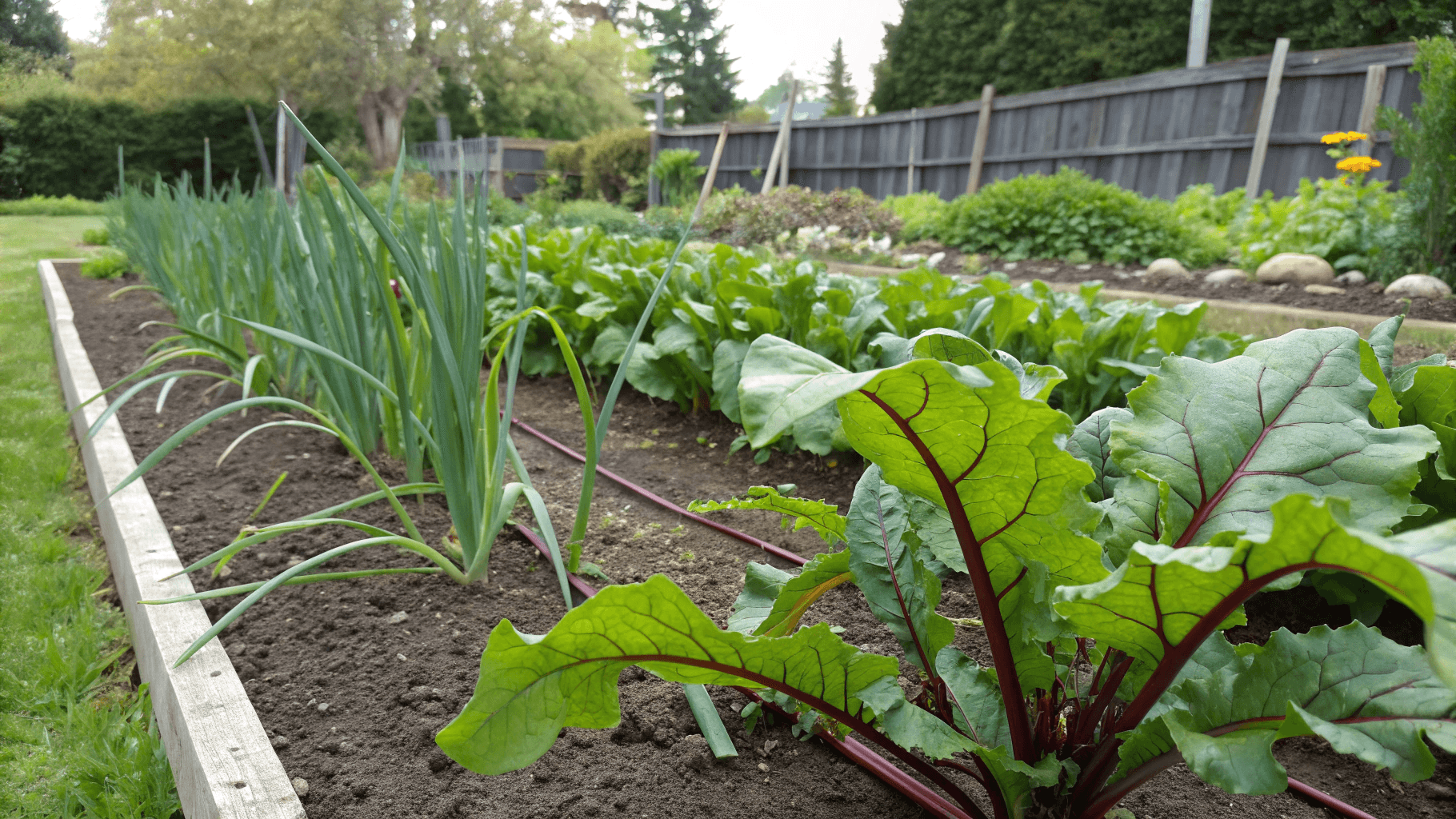
Garlic can help shield beet plants from leaf-eating pests, allowing them to develop strong, healthy roots. Its presence may also improve soil conditions for beets over time.
9. Brassica family (cabbage, broccoli, cauliflower, kale)
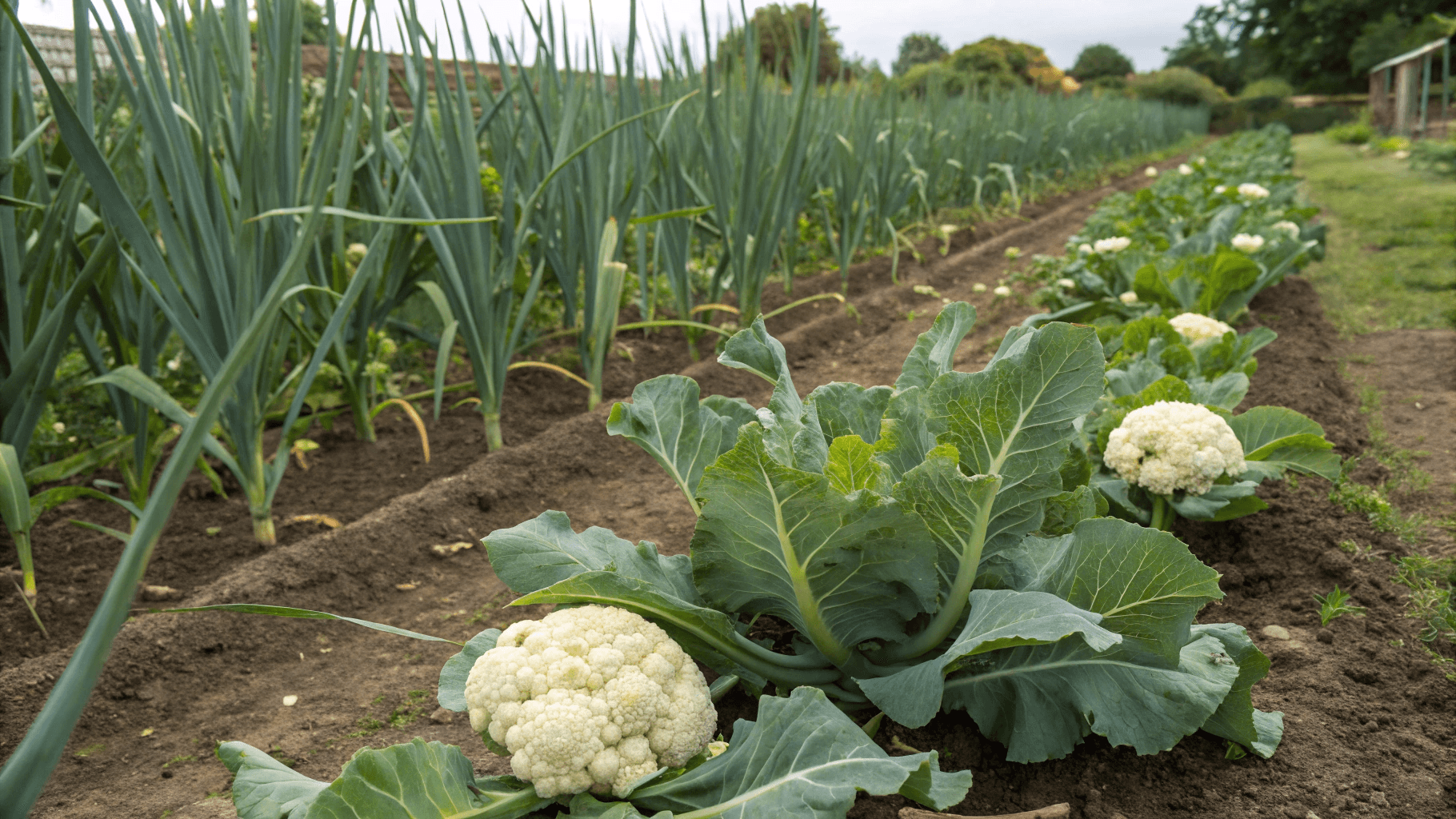
Garlic acts as a natural defense against cabbage moths, flea beetles, and other pests common to this family. Planting garlic nearby encourages stronger growth and reduces the need for pesticides.
10. Eggplants
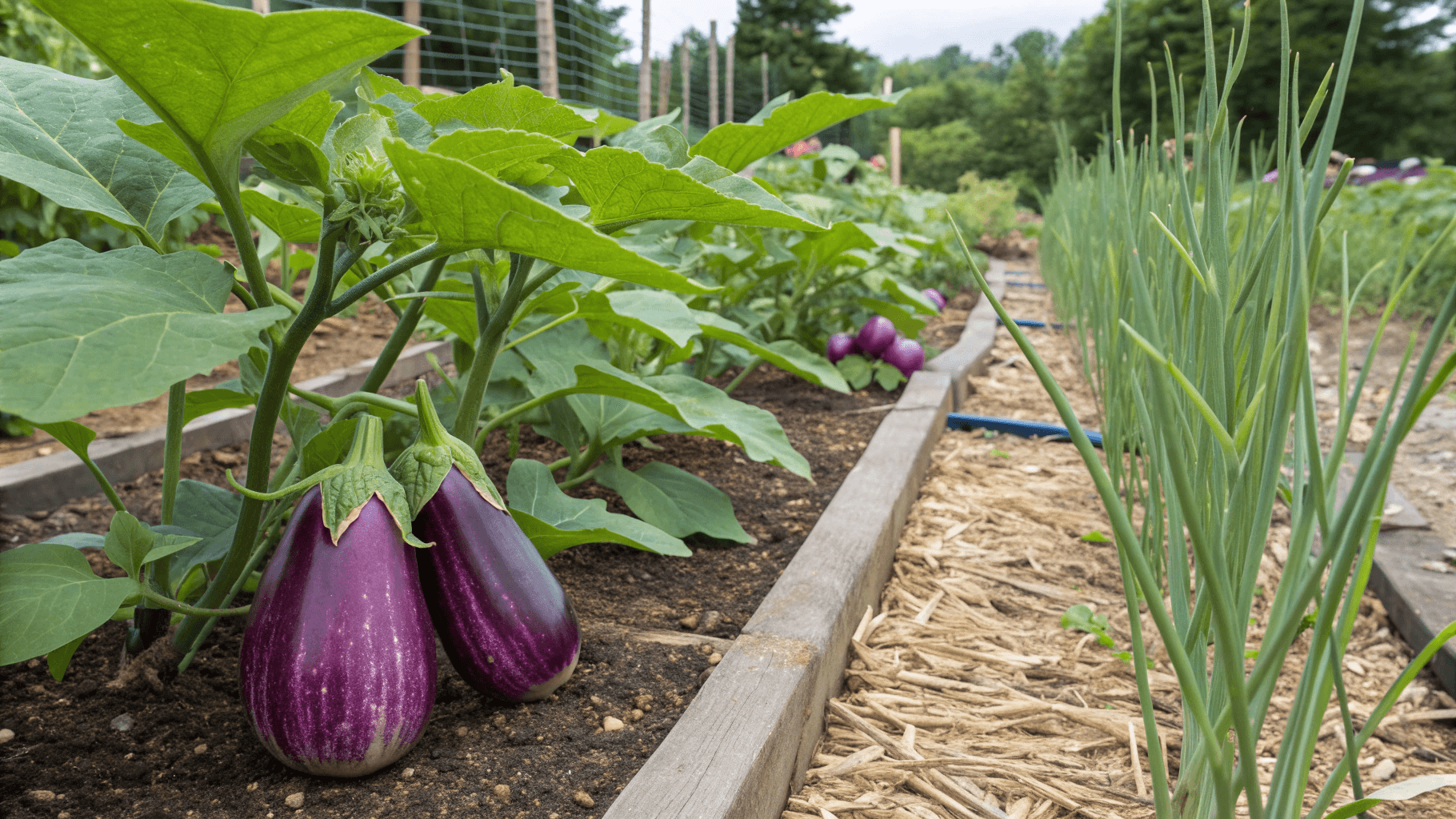
Garlic deters aphids and flea beetles that commonly attack eggplants. This results in healthier plants with fewer damaged leaves, leading to a better harvest.
11. Fruit trees like apples and peaches

They thrive when garlic is planted nearby. The strong aroma of garlic helps deter aphids and borers that commonly attack fruit trees, while also reducing fungal infections in the soil. This natural protection allows your fruit trees to grow healthier and produce better-tasting fruit without the need for chemical treatments.
Additionally, garlic helps reduce fungal infections in the soil, such as powdery mildew, which often affects apple and peach trees in humid conditions.
12. Herbs

- Chamomile – Planting chamomile near garlic can enhance the growth and flavor of both plants while attracting beneficial insects that prey on pests.
- Dill – Dill draws predatory insects, such as ladybugs and lacewings, which feed on aphids and other garlic pests.
- Rue – This herb repels aphids and spider mites, offering an extra layer of protection for your garlic and nearby crops.
- Summer savory – When planted alongside garlic, summer savory can improve the flavor and vigor of garlic bulbs while keeping pests at bay.
- Yarrow – Yarrow attracts beneficial insects and improves soil health, making it a perfect companion for garlic in mixed beds.
- Rosemary – A fragrant and hardy herb, rosemary deters insects that could otherwise target garlic or its neighboring plants.
13. Flowers
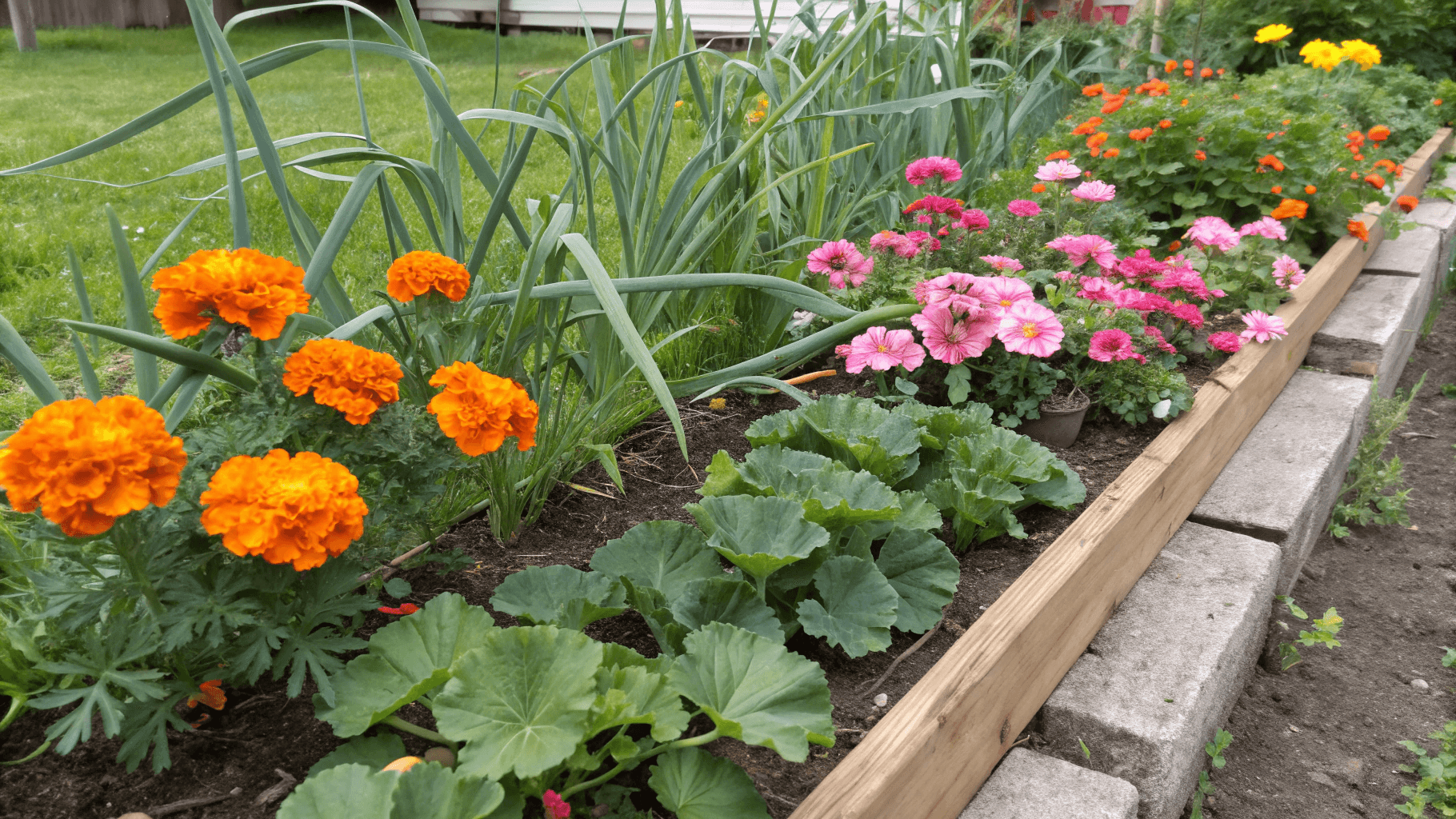
- Geraniums – These flowers act as a barrier against Japanese beetles and other pests that might otherwise feast on garlic or nearby vegetables.
- Marigolds – Known for their pest-repelling qualities, marigolds help deter nematodes and other soil-borne insects that can harm garlic.
- Nasturtiums – These bright, edible flowers serve as a “trap crop,” attracting aphids and keeping them away from garlic and surrounding plants.
Plants to Avoid Near Garlic
While garlic is friendly with many plants, there are some it just doesn’t get along with. Planting these near garlic can stunt growth or even reduce yield.
1. Beans and Peas
Legumes like beans and peas are garlic’s biggest enemies. Garlic releases sulfur compounds that can inhibit nitrogen-fixing bacteria in legumes, which are crucial for their growth. Avoid planting them together, or keep them far apart in your garden rotation.
2. Sage
Sage and garlic are both strong-flavored plants, but unfortunately, they don’t thrive together. Garlic can stunt sage growth and vice versa. Plant these separately to ensure both flourish.
3. Asparagus
Asparagus and garlic are another incompatible pair. Garlic can stunt asparagus growth and affect its spear production. If you love both, consider planting them in completely different areas of your garden.
4. Parsley
Garlic can inhibit the growth of parsley by competing for nutrients and releasing allelopathic compounds into the soil. Planting them together can result in stunted parsley leaves and reduced overall vigor. Keeping parsley in a separate bed ensures both plants can thrive without interference.
How to Plan Your Garlic Companion Bed
Now that you know who garlic likes and dislikes, let’s talk about how to plan your garlic companion bed for maximum benefit.
1. Consider Spacing

Garlic needs room for its bulbs to develop properly. Plant cloves about 4–6 inches apart in rows spaced 12–18 inches apart. This spacing works well when interplanting with companions like lettuce or carrots. Taller plants like tomatoes should be placed strategically so that garlic gets enough sunlight.
2. Layout Examples
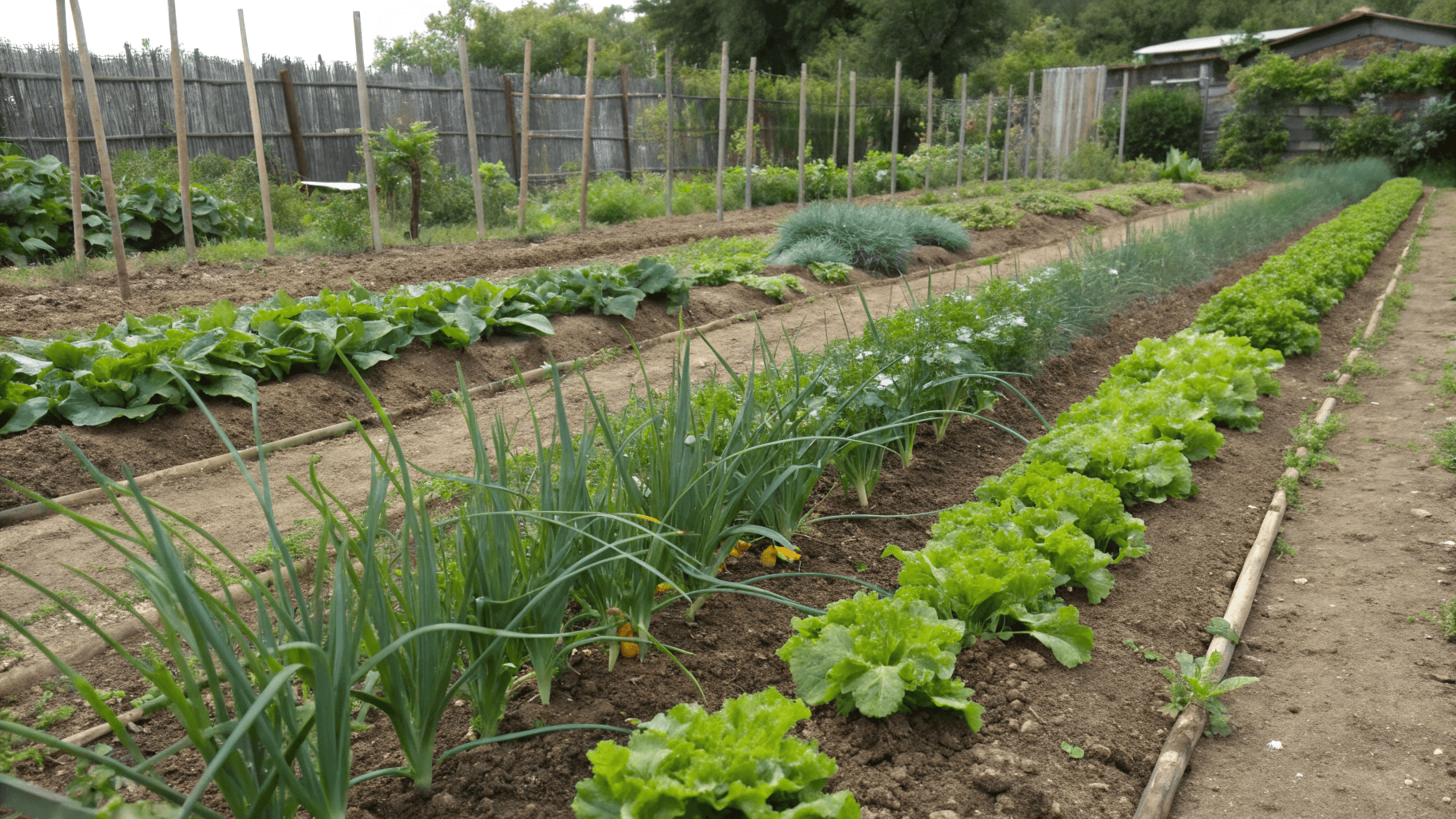
- Mixed Row Approach: Plant garlic in alternating rows with carrots, lettuce, or peppers. This encourages pest control while maximizing your space.
- Perimeter Planting: Plant garlic around the edges of beds containing tomatoes, roses, or strawberries. This creates a natural pest barrier while enhancing growth.
- Cluster Planting: For small spaces, consider planting garlic in clusters between companion plants. Just make sure the garlic bulbs don’t crowd the neighbors.
3. Crop Rotation
To avoid soil-borne diseases, rotate your garlic and its companions each season. Avoid planting garlic in the same spot more than once every three years, and pair it with compatible plants like tomatoes or carrots in the rotation cycle.
Use Garlic as a Natural Pest Barrier in Mixed Beds
One of the easiest ways to maximize garlic’s benefits is to use it as a natural pest barrier. Plant garlic at strategic points in your garden, such as around tomatoes, peppers, or rose bushes, to repel insects naturally. You can even plant a border of garlic around entire vegetable beds to protect multiple crops at once.
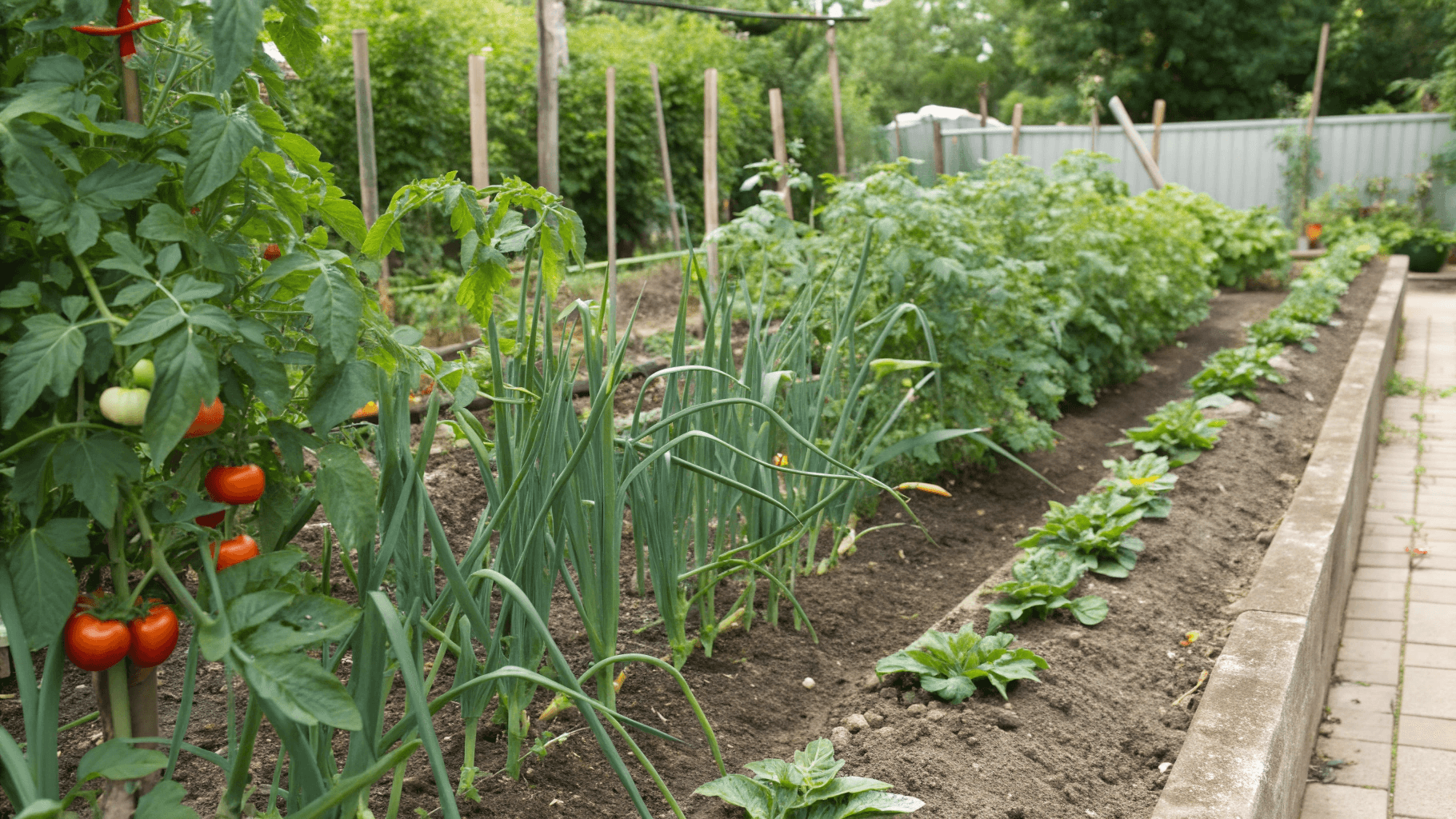
A little garlic goes a long way. Not only does it reduce pests, but it also discourages small mammals like rabbits and deer from nibbling on tender plants. Plus, you get to harvest your garlic while keeping your garden safe, a win-win!
Conclusion
Garlic isn’t just a flavorful addition to your kitchen; it’s a true companion in the garden. By pairing it with the right plants like tomatoes, carrots, strawberries, peppers, and even roses, you can enhance pest resistance, improve soil health, and boost overall yield.
On the other side, avoiding garlic’s incompatible neighbors, such as beans, peas, sage, and asparagus, will save you from potential frustration and poor harvests.
Use garlic as a natural pest barrier, mix it with its best companions, and watch your garden flourish with minimal effort.
Grab some garlic cloves, plan your companion-friendly garden layout, and let this humble but mighty plant do its magic. Your garden and your taste buds will thank you.


 ChatGPT
ChatGPT
 Perplexity
Perplexity
 Claude
Claude

Leave a Reply